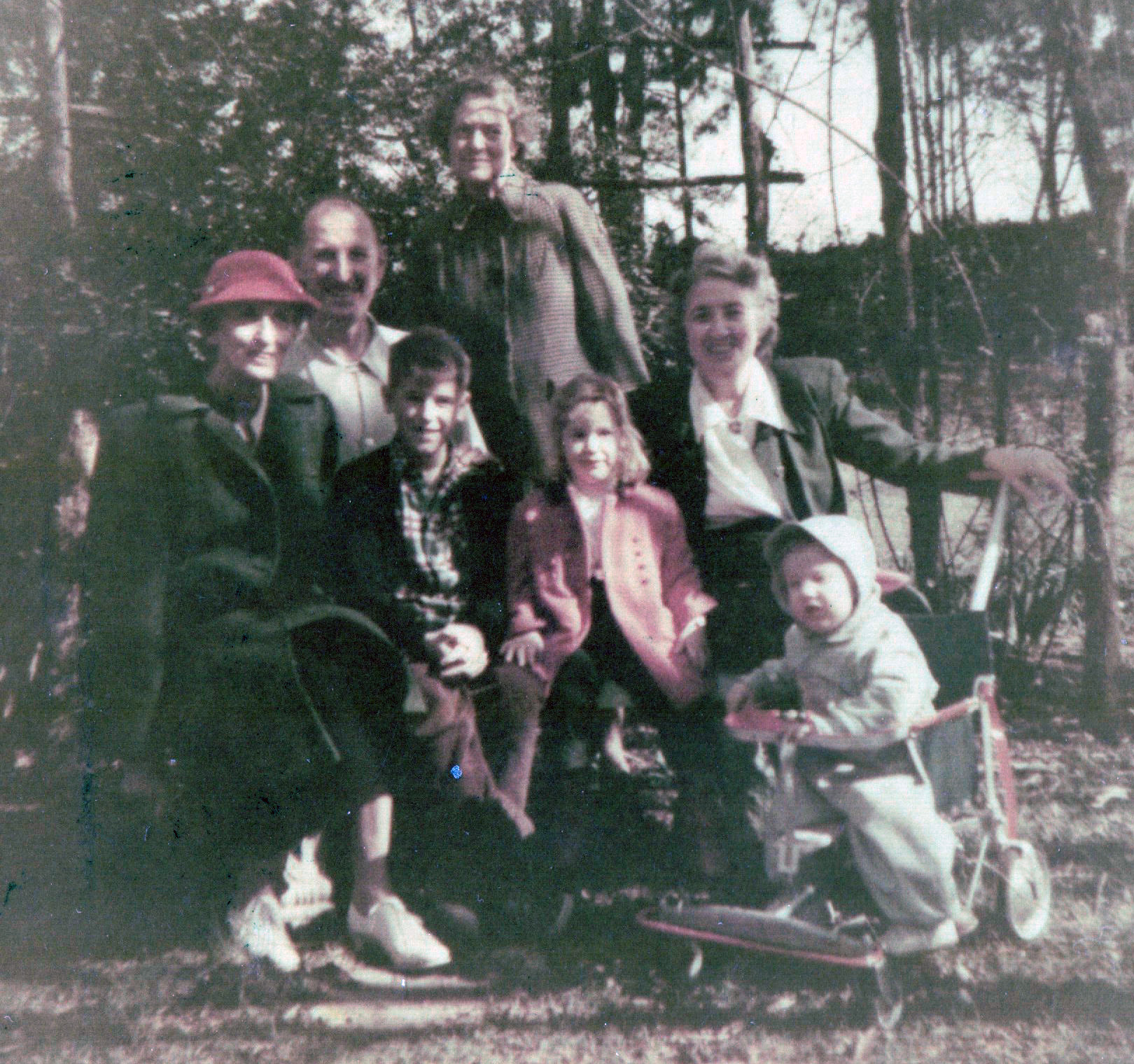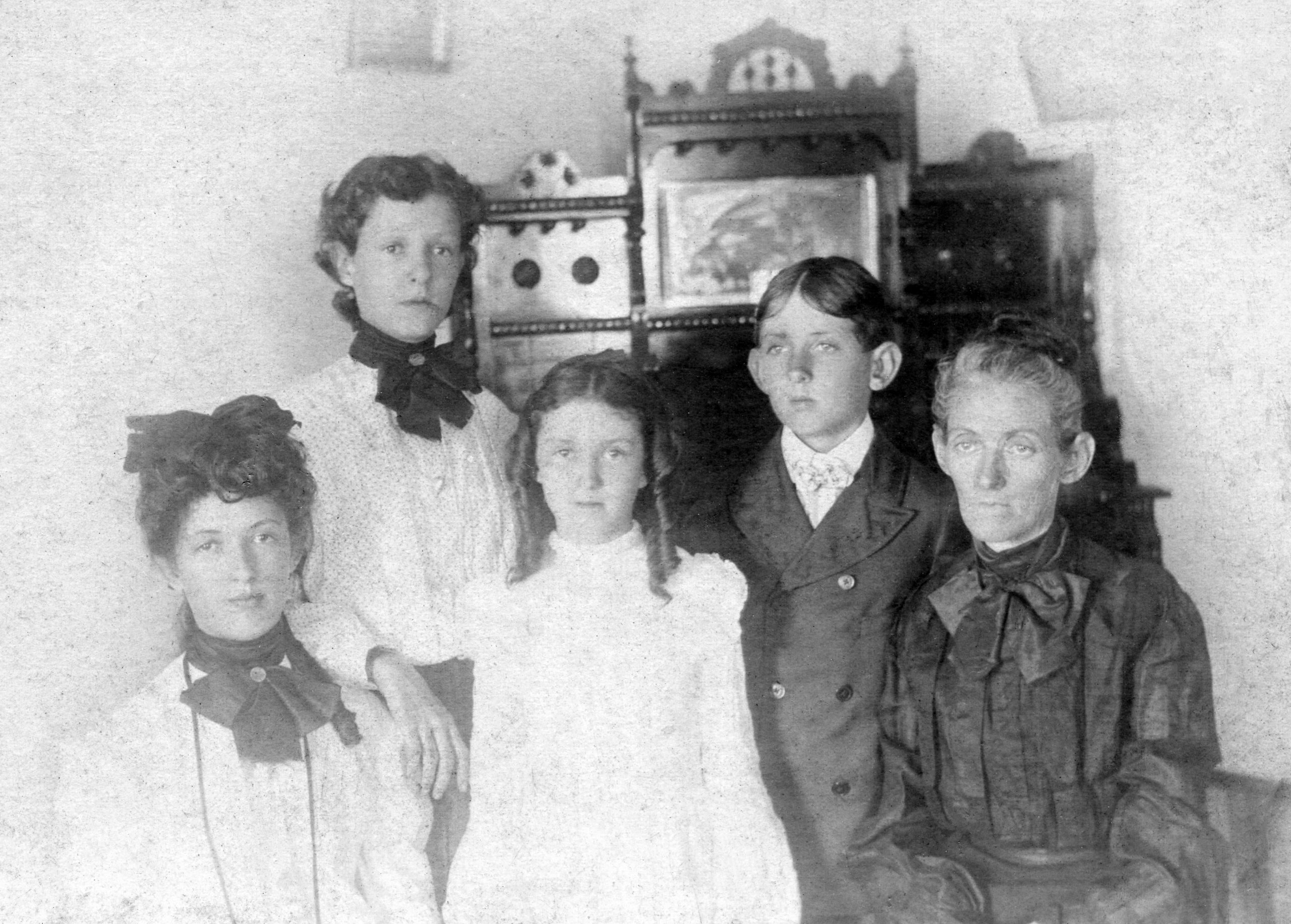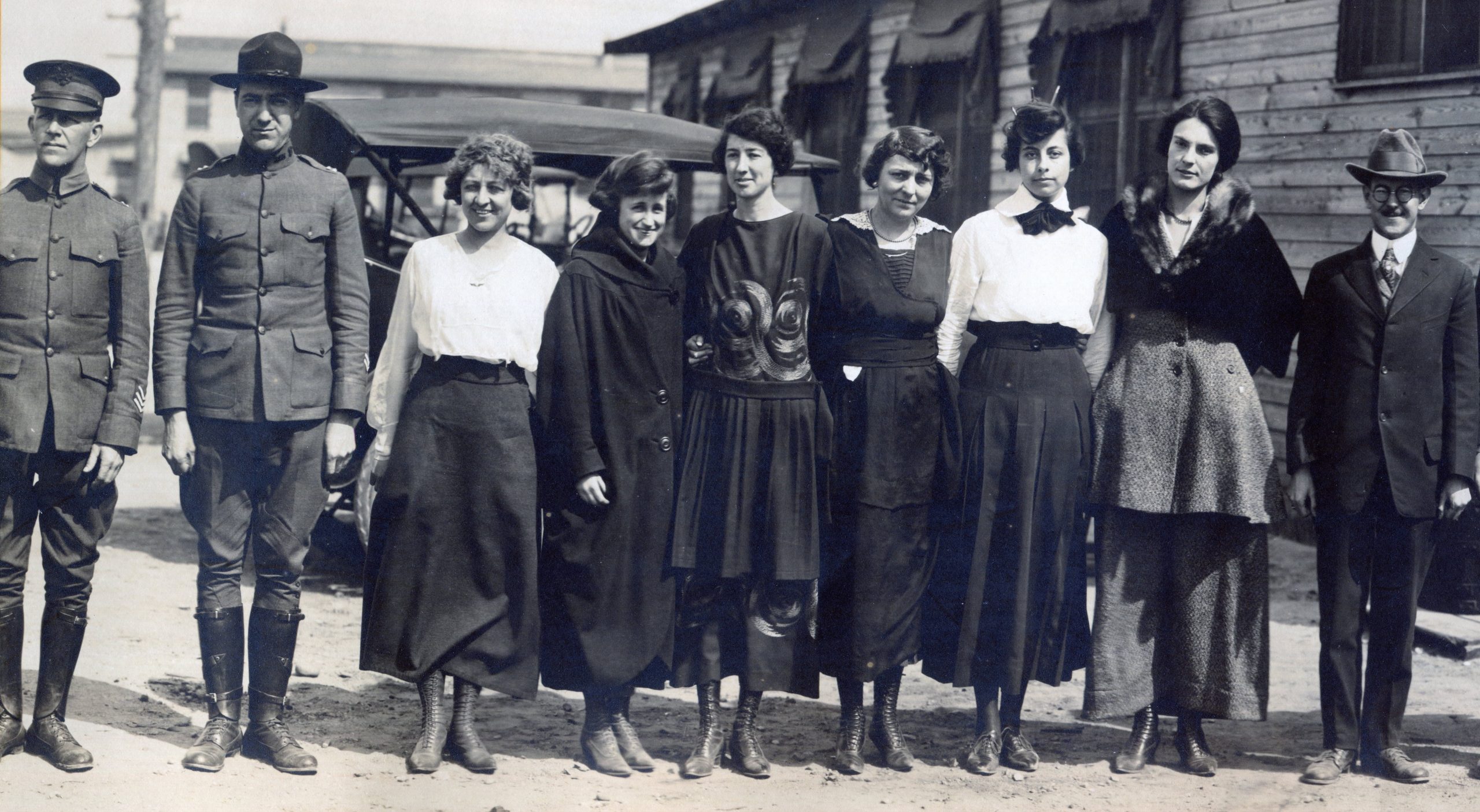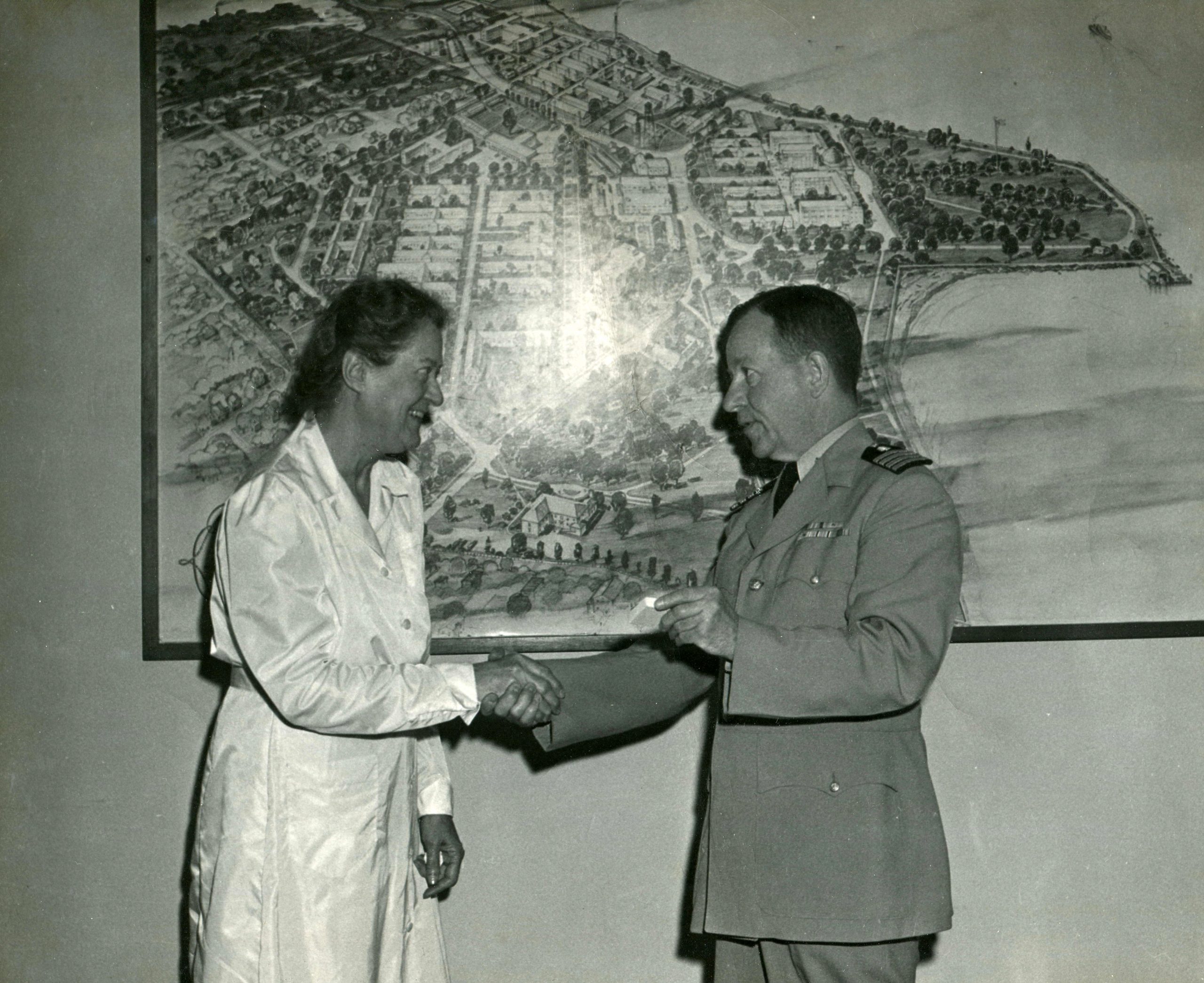(Above, Left to Right) A photograph of Elizabeth, Sue, and Ella Jordan.
On May 19, 1973, John C. Parker marked the twentieth anniversary of the establishment of Historic St. Luke’s Restoration’s executive committee by noting the limits of a memorial tablet honoring the Jordan sisters, Ella, Susan, and Elizabeth. “Their role in the Restoration,” Parker admitted, “is beyond any brief relation.” In October 1952, they had proposed the project to Bishop Gunn and willed it to completion by force of determination. Parker’s speech has a prophetic weight in the sense that it spoke both to an audience in 1973 and to future visitors to the grounds of Historic St. Luke’s: “If you seek a monument for the Jordan sisters, look about you.” Exactly three weeks later, Ella Jordan passed away. For the first time in her life, Elizabeth was alone.
At the time of writing, we are now 45 years removed from the passing of the last of the Jordan sisters—the Misses Jordan of Fort Boykin. In support of Women’s History Month, I’ve been asked as a Jordan descendant to share something of our family’s oral tradition. Brevity never ran in the family so, I hope you’ll abide some detail. My aim is to offer a coda to Mr. Parker’s remarks and to champion three trailblazing women who loved Historic St. Luke’s Church.
To our family, Elizabeth Jordan and her sisters were “the Jordan girls” or simply “the Girls.” An inseparable triad never to be divided, they lived under the same roof from cradle to grave. The Jordans were divergent in personality yet indomitable as a group. They liked their sherry, an interminable bridge tournament with old friends, and an outdoor meal in the garden. Together, their names still roll off the tongue like some tangled incantation: Ella, Sue, and Elizabeth. In fact, we speak of them so often in that way that my wife once thought our stories were about “Ella Sue” and Elizabeth.
(Above) A photograph taken at Christmastime with “the Girls” at their Fort Boykin home, taken in the 1950s. Back row, center: Elizabeth Jordan. Front row, left to right: Ella Jordan, Dr. William P. Sellers III, William P. Sellers IV, Alston Sellers, Sue Jordan, and Edward J. Sellers Sr.
The Misses Jordan in Rescue
Each Jordan was in her own way a reflection of their mother’s integrity and a reaction against their father’s demons. At the close of the nineteenth century, their father, William Francis Jordan, owned and operated the country store and post office in the fishing village of Rescue. Mr. Jordan was the sort of affable, well-mustachioed clerk that you’d expect to find behind the counter in a cowboy movie at high noon. The Jordan kids grew up darting between barrels of flour, meal, and sugar as neighbors bumped into one another in search of everything from candles and cured meats to oyster tongs and cow crackers. Ella, Sue, Elizabeth, and their brother Will lived above the store in rooms insulated with old newspaper. On a typical day, after the evening mail delivery, “The Jordan Store Men’s Club” gaveled into open session. Oystermen huddled around a pot-bellied stove for overlong conversations about happenings on the river. The club’s indulgences of choice, bourbon and cards, had a way of upending what stability families could carve out of life on the banks of the James.
Three days of heavy drinking and a doctor’s visit deferred were all that it took to stoke fears of a family curse. After Col. Josiah William Jordan had died unexpectedly a generation before, William Francis Jordan and his young siblings were raised by aunts and uncles to keep the family together. My great-great grandfather, Walter Baker Jordan, operated a drugstore in Petersburg and saved to purchase a farm that could reunite his siblings. That fruit orchard home was Springfield, which was in the vicinity of the Eagle Harbor development. Walter and Joe Jordan housed and employed their younger brother until he finally settled down in Rescue to start a family. However, both older brothers had privately doubted it would last. As Uncle Joe would observe, William had been too young to recall their childhood hardship and never really learned. In death, William Francis Jordan was “history repeating itself.” Young Ella, Sue, Elizabeth, and Will nearly became the second successive generation of orphaned Jordans.
Mr. Jordan passed with a melodramatic flourish. There was a deathbed oath—no drinking, no cards—extracted from little Will. An apology, given in broken tones to his beloved wife, hung in the air. He passed in a cold sweat of penance for failings lately recognized. He went quickly while Ella, Sue, and Elizabeth were in class. Death arrived just as the family doctor crossed the threshold. Will had to run to the schoolhouse to fetch his sisters. Within the week, every conveyance in Rescue turned out for a funeral procession down to the Jordan plot at Old St. Luke’s. Then darkness descended. Ella, Sue, Elizabeth, and Will had to bypass their teenage years and assume adult roles. The children did what they could to run the store and deliver the mail as their mother struggled with the news. There was no money.
(Above, Left to Right) Photograph of Ella, Elizabeth, Sue, Will, and Lizzie Jordan in Rescue, Virginia, following the death of William Francis Jordan in 1903.
Mrs. Lizzie (Sarah Elizabeth Massey Johnson Jordan) emerged resolute from a month in bed following her husband’s death. Lizzie called each of her husband’s creditors to her side and assumed his last bequest: a mortgage and over $1,000 in gambling debts. As she sat up in bed with a shawl over her shoulders, she requested a year to prove her financial solvency. She vowed not to consent to family separation nor would she sell if she could avoid it. Through grit and determined brilliance, Lizzie assumed the duties of Rescue’s postmaster and managed the country store with the help of her children. The kids took turns making deliveries on their wayward mare, Daisy. Orders were paid in cash for the season. In time, each creditor was paid in full. Aunts and uncles in Carrollton helped in their way. However, it was Lizzie’s singular focus on catastrophic debt payment that set everything to rights. The Jordans lived frugally in Rescue until Ella, Sue, Elizabeth, and Will’s combined salaries allowed them to buy a place on Manchester Ave in Norfolk. Each child attended some college (at least enough to get by). Together, they rode out the Depression and food rationing, which to them was more of the same.
I flag this pre-history because the traumas of 1903 explain the drive that made Ella, Sue, and Elizabeth so resilient. They spent their retirement on big projects—Fort Boykin and Historic St. Luke’s Restoration—because they learned their collective strength early.
The Jordans could not be broken or separated because their mother would not have tolerated it. Mr. Jordan’s death hung in the air for over thirty years as a morality tale. To be sure, there were packets of love letters secreted in a corner of Elizabeth’s steamer trunk. But if there was ever talk of marriage or children, it stayed speculative. While Lizzie Jordan lived, she would not consent to her children marrying. Ella, Sue, and Elizabeth were required to find other ways to define themselves.
It should be no surprise that Ella, Sue, and Elizabeth owned multiple, well-loved copies of Elizabeth Gaskell’s novel, Cranford, which is set in an English town where “all the holders of houses, above a certain rent, are women.” Like the Jenkyns sisters of Gaskell’s novel, the Misses Jordan were raised to be financially independent warrior women. As if to beat back the family demons, they didn’t rest until their father’s childhood home—Fort Boykin—returned to the family in 1951. Although the Jordan’s Craftsman home has since been destroyed, Fort Boykin truly flourished “in possession of the Amazons.” The Fort became a Cranford of their own making.
Ella Imogene Jordan
Ella was the oldest and resembled her mother in all things. Of the three sisters, Ella was the quiet, prim, and proper lady who shunned the spotlight. She was content to be the correspondent and record keeper who accepted the thankless work that no one wanted to do. After the family moved to Norfolk, Ella attended business college and worked variously as a secretary and treasurer of several of the successful firms downtown. The long hours of accounting and hidden labor of financial planning were her specialty. If Ella were alive today, she’d be an in-demand CPA or the administrative assistant who keeps everyone else sane. From her time in the country store to her retirement, Ella was the detail-oriented eye that kept the lights on wherever she landed. Ella made sure that the bills got paid on time. With hindsight, Ella’s final title, “Assistant Secretary of St. Luke’s Foundation,” speaks to the sort of modest disregard for acknowledgement that typified her life.
(Above) Photograph of Ella Jordan as secretary to Mr. Hastings in Norfolk, VA.
In actuality, Ella was the skilled typist, the bookkeeper, and the lord of the ledger. As a 1950s promotional film recently discovered in St. Luke’s collection shows, Ella felt most comfortable in the off-camera role formerly occupied by her aunt and namesake, Martha “Ella” Jordan. In the film, Ella logs the names of local children as they donate their pocket change. She carefully lingers over the name of each donor who contributed to the church’s restoration—no matter how small the offering. What the film doesn’t show are the days of letter-writing that she’s planning. Ella made a point to send each donor a letter of thanks. It was a simple kindness that her Aunt Ella had established as the moral center of the 1880s restoration. Like her namesake, who ran the one-room schoolhouse in Carrollton, Ella’s first career was also in the fledgling Isle of Wight County schools. To understand Ella, it helps to see through immediately to that altruistic teacher’s heart. She internalized a connection to her namesake in the best possible way. Ella wanted children to know that their contribution to posterity was as essential as the donor with the deepest pockets.
Susan Dawley Jordan
Sue was the youngest, a farmgirl professional. Like Ella, Sue had the teacher’s heart, but like Elizabeth, you’d always find her wherever the children played. Between Elizabeth’s boundless organizing energy and Ella’s bookkeeping, Sue’s role in the Restoration is harder to quantify in the written record. Like most volunteers, she contributed consistently to whatever else needed doing that her big sisters hadn’t already claimed. The Jordans shouldered each other’s work in ways that are not neatly confined to a list of duties.
(Above) Photograph of Sue Jordan (center), Constructing Quartermaster’s Office Staff, taken March 13, 1919.
Sue had studied at Farmville State Teacher’s College (now Longwood) as well as the College of William and Mary. Higher education led Sue to the administrative track and a brief tenure as principal of a consolidated rural high school. During WWI, Sue’s civilian service began at the War Department in Washington, D.C. where she clerked in the construction division of the Quartermaster’s Office. In the 1920s, Sue transferred home as an accountant for Norfolk Naval Base. Over thirty-three years, she was promoted steadily through the ranks of the General Supply Depot. In 1951, when the sisters moved to Fort Boykin, Sue retired as the Depot’s Property and Supply Assistant.
Although Fort Boykin no longer supports its menagerie, the peacocks, goats, and chickens that some might recall were part of Sue’s purposeful return to country life. Children who visited the Jordan’s private petting zoo in the 1950s knew the bustling barnyard and the log bridge over the pond. Goat rides (belt saddles optional) broke in many a toddler wrangler. When Sue passed suddenly in 1960, much of the playful wonder passed from the Fort, leaving Ella and Elizabeth to complete the work the three had begun.
Sarah Elizabeth Jordan
Locals called her “Miss Elizabeth,” singularly with the Jordan portion understood. Once deeply in love yet resolutely single, Elizabeth lived the imperatives of her widowed mother: self-reliance, all debts paid, and restless kindness. She strove for meaning beyond being someone’s housewife. Ever earning her title, “Miss Elizabeth” persisted, unmatched in all things. She was a force out of time in a Mad Men world.
Elizabeth bent the will of the Virginia legislature to accept the eighteen-acre gift into which she and her sisters poured their combined life savings. Fort Boykin as a park? That’s all Elizabeth. She wrapped a network of wealthy and well-connected men around the plan to restore the Old Brick Church. She drafted the bylaws of Historic St. Luke’s Restoration. She mapped the cemetery. She collected loose bits of glass and nails by hand in case the church became a museum. For media visits, she was perpetually on-call with the keys to the church door.
The founding documents of the Restoration acknowledge the accolades that she willingly declined. Elizabeth walked away from the executive role—a title that she privately knew she deserved—because it achieved her end. She carried the workload all the same. Never underestimate the power that a “secretary” wielded and understand that Elizabeth got things done. She was the vital spark behind the Jordan sisters’ projects. The first descriptors that came to my dad’s mind to describe Elizabeth were “coordinator” and “organizer.” Neither failing eyes, arthritis, nor the deaths of her sisters could halt her drive. Checklists continued to be crossed to the end.
Elizabeth embodied the Jordan family motto to the fullest, Percussa Resurgo: Knocked down, I rise again. She was a fine Virginia lady—not without fault or prejudice—and a force to be reckoned with. Though neither a historian nor a genealogist by trade, Elizabeth loved history and took pride in her ancestry. Her hand-painted family crest hangs beside our daughter’s bed. Elizabeth was a Jordan of that old Isle of Wight pronunciation, “Jer-den.” She was in her element holding a Smithfield ham biscuit or shucking an oyster. Her passion was scouring the courthouse for records to transcribe and mail to a distant cousin. If your surname was Jordan, Elizabeth would find you. She would write you, invite you to call at the Fort, inquire after your people, and scrupulously encourage a charitable donation in conjunction with the annual pilgrimage at St. Luke’s.
Elizabeth’s talents were diverse. During the Depression, she ran an arts and crafts store in Norfolk, taught painting, studied psychology, and trained in occupational therapy. More than twenty-six years of her life were devoted to the Federal service. From 1928-1930 and 1947-1951, Elizabeth worked as an occupational therapist at the United States Naval Hospital in Norfolk in addition to her years at various veterans’ facilities in North Carolina, Louisiana, Georgia, and Pennsylvania. Elizabeth’s impact was geographically diffuse yet always significant.
(Above) Photograph of Elizabeth Jordan and Capt. C.J. Stuart on the occasion of Elizabeth’s retirement from the naval hospital, June 1951.
During WWI, Elizabeth began a parallel career as an artist, producing architectural and mechanical drawings for the Seaboard Air Line Railway. She was a trailblazer there too: the railroad’s first engineering draftswoman. After training and serving in the Veteran’s Administration, Elizabeth transferred to Norfolk Naval Shipyard and served as Senior Ship Engineering Draftswoman throughout WWII until June 1946 when she returned to her work in therapy.
Wherever her talents were needed, there you would find Elizabeth (just fashionably late). People with questions could expect—and would receive—an earnest, newsy reply on onion-skin typing paper. How many can expect the same with confidence today? My granddad was her doctor and had to sew her up during her eighties because someone came by Fort Boykin inquiring about the cemetery at the Rocks. Rather than tell the person about it or point them in the general direction, she walked right out of the house and escorted them directly to the site. Along the way, she went the short route, shimmied over the fence, got caught on some wire, gave a tour, then walked back (bloodied and all), never missing a beat.
I suspect that anyone who probes the history of Historic St. Luke’s will discover objectively that there is some truth to this statement: there would be no St. Luke’s today without two women, Elizabeth Jordan and her aunt Martha “Ella” Jordan. Like Aunt Ella, Elizabeth’s position as “secretary” is easy to misunderstand. By collecting anecdotes and penning reams of documents, Elizabeth—consciously or not—is the narrator of a staggering archive of church history. Until her death in 1976, questions about St. Luke’s went to Miss Elizabeth. Unlike her friends Sig Dashiell and Helen Haverty King, Elizabeth didn’t write a book that fully captured the local color for which she was known.
(Above) Photograph of Sue, Elizabeth, and Ella Jordan behind their Fort Boykin home.
The Jordan Girls
Forty-five years on, you won’t find much written about Ella, Sue, or Elizabeth in the public domain. The men on the board of the 1950s Restoration got a lot of good press. But if you read the many pages of fragile typewriter paper in St. Luke’s archives, you can catch a glimpse of the gentle hurricane at the center of it all. If you look through the pictures from the 1950s or watch the promotional film, you’ll see the suits. But if there’s a woman present in the picture, it’s Elizabeth.
Even in the 1950s, men were hard pressed to keep Elizabeth to the periphery, which I think is an accomplishment that John C. Parker tried to underscore. She and her sisters were indispensable. Much of the “behind-the-scenes” work of the foundation fell to the Jordan sisters who took on everything with gusto. Elizabeth was a master tactician when it came to getting their goals accomplished even if it meant that someone else got the credit. Oftentimes, others did just that. But that’s who Elizabeth was and St. Luke’s is still there, just as John C. Parker anticipated.
Ella, Sue, and Elizabeth would be pleased enough with that but happier if you did the right thing with some spare change or hit that donate button.
Enjoy this article? Please consider supporting St. Luke’s with a donation!
Dr. Jordan Sellers is a lecturer in the Department of English at the University of Illinois at Urbana-Champaign, where he has taught since 2007. His research examines the cultural legacy of the Revolutionary and Napoleonic Wars with emphasis on anti-war writing. His most recent work has appeared in European Romantic Review and Modern Language Quarterly. As a Jordan descendant, Sellers’ connection to Historic St. Luke’s is multigenerational. His great-great grandfather, Walter Baker Jordan, was one of the originators of the 1890s restoration. He is the great-great-great grandson of Col. Josiah William Jordan and Frances Moseley Dawley as well as the great-grandnephew of the Jordan Angels, all of whom are memorialized in the church’s stained glass windows.








